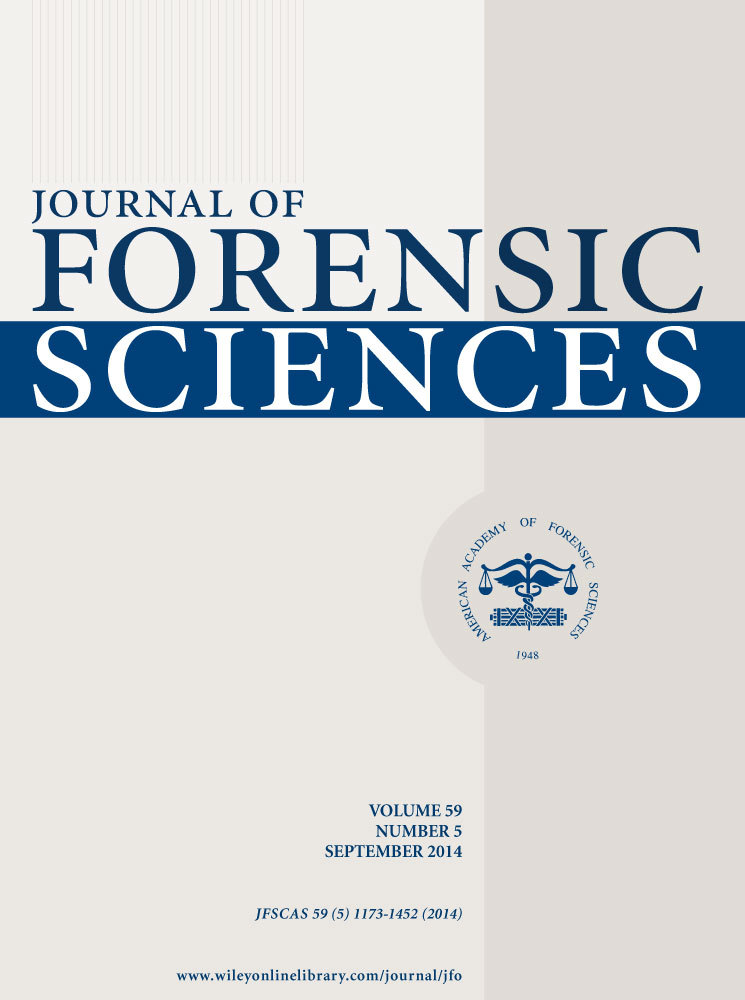An Examination of the Postmortem Redistribution of Fentanyl and Interlaboratory Variability†,‡
Abstract
Fentanyl is a synthetic opioid agonist used for pain control. Often administered as a transdermal patch, it is an interesting drug for study of postmortem redistribution. We hypothesized that fentanyl concentrations would increase over time after death, as measured in blood drawn on the day prior to autopsy and in blood drawn at the time of autopsy in ten cases where fentanyl patches were identified at the scene. Concentrations were compared, and heart blood to femoral blood ratios were calculated as markers of postmortem redistribution. Fentanyl concentrations measured in peripheral blood drawn the day of autopsy (peripheral blood 2 [PB2]) were higher than those drawn the day prior to autopsy (peripheral blood 1 [PB1]) with a mean ratio (PB2/PB1) of 1.80. The ratio of heart blood concentrations (HB) to femoral blood concentrations drawn at autopsy (PB2) had a mean ratio (HB/PB2) of 1.08. Some cases had blood from the same source analyzed at two different laboratories, and concentrations of fentanyl in those samples showed inter- and intralaboratory differences up to 25 ng/mL. Postmortem fentanyl concentrations may be affected by antemortem factors, postmortem redistribution, and laboratory variability. Forensic pathologists must use caution in interpreting fentanyl levels as part of death investigation.




